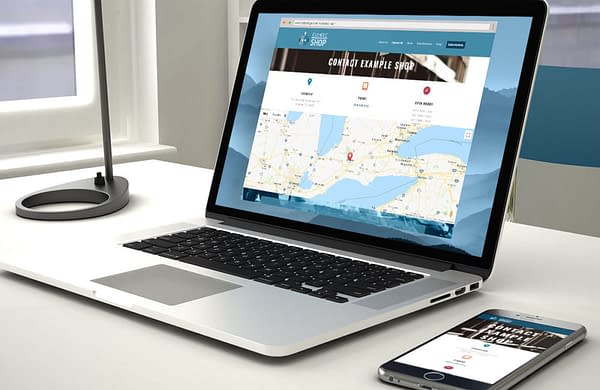Posted in: Comics | Tagged: managing your shop
Managing Your Shop: Say It With Your Website
Brian Garside is the founder of Manage Comics, subscription pull list software for comic shops, and he's dedicated his life to helping comic stores grow, survive and thrive. This post is part of his series "Managing Your Shop"
In our previous column, "How Comic Shops Can Survive the Inevitable Sales Apocalypse", we mentioned five strategies that comic shops need to employ to survive the retail apocalypse. The fifth of those strategies was "Be Where Your Customers Are", specifically that you need to have a solid web presence.
I wrote about some of the other things you need (and I will go more in depth on social media in the future), but the cornerstone of anything you do should be a website. A website is an asset, you own it entirely, and unlike your social media presence, it can never be taken away from you.
A lot of stores aim for the stars and more often than not fall very short of their mark. While it's nice to have the ability to make sales online, if you don't have the infrastructure to support an online store, don't start there. You can get by and be successful with a very low barrier to entry website.
A well structured, clean website with good, updated information is way more valuable to your business than an unstructured website that is unclear and outdated.
What you need for a website: Website Domain
This is something like www.yourstorename.com, there are many "website registrars", most people will default to GoDaddy, I prefer Hover because they don't try to upsell you on 25 different things you don't need. Try to register the .com domain, but if you have to settle for a .net, or a .co, that's fine too. Remember that a website domain is an asset, and that like other assets, it increases the value of your business.
Website hosting
Once you have purchased your domain, you need somewhere that will actually serve up the files that make up your website. One note about hosting: Depending on your host, you may get a free domain. Some good hosting options for a simple website include Wix, Squarespace, and WordPress.com. Each will cost you in the neighbourhood of $10-$20/month, and are relatively easy to set up for a simple solution.
For a more complex solution (anything that involves e-commerce), you should hire a professional. By "professional", I do not mean your father's brother's nephew's cousin's former roommate. I mean someone who professionally builds e-commerce solutions for businesses and who you can go back to when things inevitably break down (and they will break down).
What you need on your website
You need four key elements for a good website which will answer who/what, when, and where.
Who are you? This is usually an "About Us" section, talking about how long you've been in business, who are the people behind the business? Tell some stories about each person's strengths and what they can help people find. Include pictures of your store, both the exterior and the interior. Make sure that any pictures you take are well light, and staged for the photos.
What is your store about? What kind of products do you carry? What is your store's secret origin? What's the unique selling feature of your store that would make me want to leave my home, make an effort to go to your shop, and spend my money there. If you have an ebay store, or a specific service you use, make sure there are clear links to those other sites on your site.
When are you open? This should be clearly labelled and preferably on every page (in the footer). If you have special events, list them clearly as well, something like an events calendar is a good idea for this kind of content.
Where are you located? – An address and references to nearby landmarks is a great first step. A clear map is a must have. Hooking in to Google's maps content will give clear walking, driving, and even public transportation directions.
Have someone who is familiar with websites hook up all of the metadata in the background. This will help make your website searchable, and if this is done properly, your website will start to show up in searches.
Bonus – Good, sustainable, timely content
Some stores like to post a "weekly newsletter", announcing what is arriving in the store, upcoming events, and things that customers should look out for. This is a great idea, if you can sustain it. Writing something every week is a challenge, but it's one of the most valuable things that you can do for your business.
The caution with writing is that it's a commitment, and if you are going to commit to writing, you need to make sure that you aren't going to drop it after a few weeks. Writing is like pushing a flywheel, it is really hard in the beginning, but you'll quickly find that it gets easier week after week. Even more impressively is that while it will seem like nobody is reading what you're writing in the beginning, week after week you'll see your audience increase. It takes about six months of sustained effort to begin to see serious growth, but it is well worth it.
Don't bite off more than you can chew. Make sure that whatever you're doing is something that you can sustain. Posting blog posts for two months and then stopping means that in two months people will wonder if your store still exists. Consider assigning posting to your staff, and rotating it the same way you rotate any other jobs, or putting one person in charge of the website.
Next time we'll talk social media, the do's, the don'ts, and the one absolute must have that your business needs immediately.

















